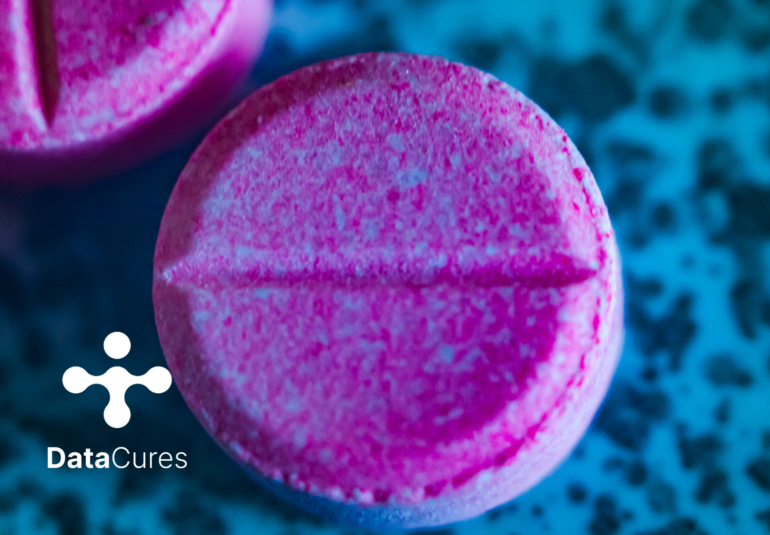

- AI and data science
-
by Henrik Grunfeld, Deyvid Ribeiro
The healthcare sector has undergone significant change as a result of technological development and connected healthcare. Healthcare services are more open and widely available than ever before in the times we live in today. Healthcare organisations will have to make significant changes as a result of the rising demand for medical services, all the while struggling to stay sustainable.
Chatbots can bring many benefits to the healthcare industry. Directing patients to the right type of care, chatbots and other AI and automation technologies will transform the healthcare sector. They will also free up healthcare workers’ time and resources while increasing productivity and enhancing patient connectivity. Parviainen and Rantala (2022)
Examples of diseases where chatbots can be useful
Chatbots can be useful in giving support, guidance, and information for a multitude of diseases and disorders. As they can offer assistance and direction to persons who are stressed, anxious, or sad, chatbots can be helpful for those with mental health conditions. They may provide information and support to those suffering from diabetes, hypertension, and heart disease or other chronic diseases.
Those who have cancer, infectious diseases like the COVID-19 flu, and other viral infections can also benefit from chatbots. A recent study found that chatbot systems that use artificial intelligence (AI) could be helpful in providing access to current, accurate, and comprehensive information about infectious diseases and vaccines against them. Zhou et al., (2023)
Researchers think that these methods could be employed to influence people to do actions that are beneficial to their health. Chatbots can give advice and information on skin disorders like eczema, psoriasis, and acne. Chatbots can also direct and help people who have sleep difficulties, including insomnia and sleep apnea. In addition, information and advice can be given regarding women’s health issues like menopause, fertility, and pregnancy. In general, chatbots can be useful in providing support, guidance, and information to individuals suffering from a range of illnesses and problems. (News-Medical.net, 2022)
High-risk cardiac patients using chatbots
Cardiovascular disease (CVD) is a leading cause of death and disability worldwide, affecting millions of people each year. Despite advances in medical technology and treatments, there is still a significant need for more effective and personalised approaches to managing cardiovascular health. CVD is often described as a complex and multifaceted condition that requires personalised and comprehensive management. However, traditional approaches to patient care and disease management often fall short of providing patients with the resources and support they need to manage their condition effectively. Additionally, healthcare providers and payers often struggle to make informed decisions about patient care due to limited access to high-quality data and advanced analytics.
High-risk cardiac patients, who often require frequent check-ins with healthcare professionals, could greatly benefit from this technology. Take the example of a 55-year-old man with a family history of heart disease and high blood pressure. This person could download an app and input his health data, including blood pressure readings and cholesterol levels. The app uses AI and machine learning to analyse the patient’s data and provide personalised recommendations for managing his risk factors. The chatbot could also supply information and resources for maintaining a healthy lifestyle, such as exercise programs and dietary advice. Reminders for taking medication could be another useful tool.
Another example would be a 65-year-old man who recently suffered a stroke. This patient could use a chatbot-based app to track his recovery and receive personalised recommendations for managing his risk factors. The app provides resources for recognizing the signs of a stroke and seeking medical attention as soon as possible.
However, there are both advantages and disadvantages to using chatbots in this context. Advantages of using chatbots for high-risk cardiac patients include increased accessibility to healthcare professionals, more personalised care, and the potential for early detection of heart problems. Patients can receive real-time advice and support without having to wait for an appointment or visit a healthcare facility. Additionally, chatbots can collect data on patients’ symptoms and provide tailored recommendations for lifestyle changes or medical treatments. This can help catch potential heart issues early and prevent serious complications.
There are also several disadvantages to using chatbots in this context. One major concern is the accuracy of the advice provided by chatbots. While some chatbots are programmed to recognize red flag symptoms and escalate cases to a human healthcare professional, others may not have this capability. Additionally, patients may be less likely to follow advice given by a chatbot compared to advice given by a human healthcare professional. Privacy and security concerns are also potential drawbacks, as sensitive medical information is being shared with a machine.
Overall, while chatbots have the potential to greatly benefit high-risk cardiac patients, it is important to weigh the advantages and disadvantages and consider individual patient needs before implementing this technology. One promising startup developing and promoting such health technologies is AIDY Health.
The benefits of using voice-enabled chatbots
Chatbots that users can talk to (“voicebots”) are increasingly emerging as a new technology trend. These chatbots have the potential to significantly improve the monitoring of cardiovascular patients.
One example would be the monitoring of patients: voicebots can be programmed to monitor cardiovascular patients in real time, using speech recognition technology to listen to patients’ responses to questions about their symptoms and health status. This can help physicians to identify any changes in their condition and provide timely interventions. In the not-so-near future, wearable technology might also be integrated into the framework of these patient monitoring systems.
Voice-enabled chatbots can also be programmed to ask patients questions about their symptoms, medical history, and current medications. Much like a triage nurse would ask the patient. Based on this information, the chatbot can provide a preliminary “diagnosis”, a recommendation to the doctor or suggest additional tests that may be required for a definitive diagnosis. This can help improve diagnostic accuracy and reduce the time required to arrive at a diagnosis.
Patients may have questions about their condition, medication, or lifestyle changes that are required for management of their condition. Voice-enabled chatbots can provide answers to common questions and guide patients towards the appropriate resources or sources of information around the clock.
By automating many routine monitoring and information-gathering tasks, voice-enabled chatbots can help reduce costs and improve efficiency in healthcare settings. This can free up healthcare professionals to focus on more complex and specialised tasks that require their expertise.
Conclusion
At any rate, as the chatbot boom spreads throughout the healthcare industry, we can assume that patients will be guided through a series of questions related to chronic diseases and skin diseases and help guide them based on their symptoms and risk; chatbots can direct them to the appropriate level of care. Medical chatbots have the potential to revolutionise healthcare, from reducing expensive and inefficient workflows to enhancing patient engagement and quality results. Chatbots will continue to assist with procedures, diagnoses, and clinical care as AI becomes more prevalent in the healthcare industry, allowing healthcare professionals to focus on the patients who need them the most.
Authors: Henrik Grunfeld & Deyvid Ribeiro
Deyvid Ribeiro is a student at Budapest’s Corvinus University. The utilisation of health technologies in the healthcare industry is the topic of his thesis as a Master’s student of health economics.
Henrik Grunfeld is the Founder of AIDY Health, a nonprofit that develops innovative health technologies. After a career in healthcare, he transitioned to tech to scale his impact.
Don’t miss a beat in the fast-paced world of data-driven healthcare! Subscribe to our newsletter for expert insights, resources, must-attend events and industry updates. Sign up for our newsletter here.


